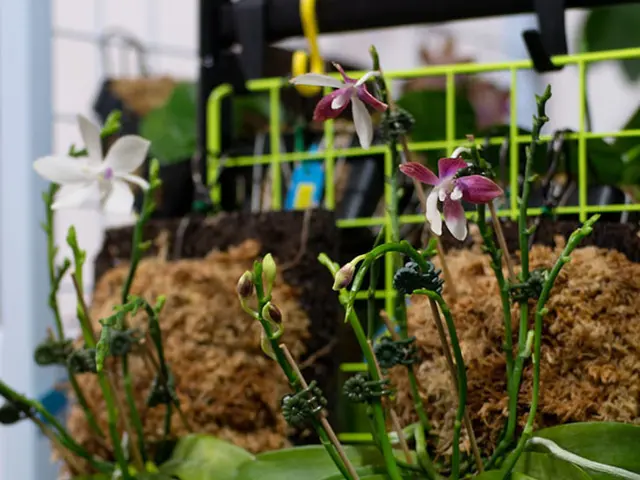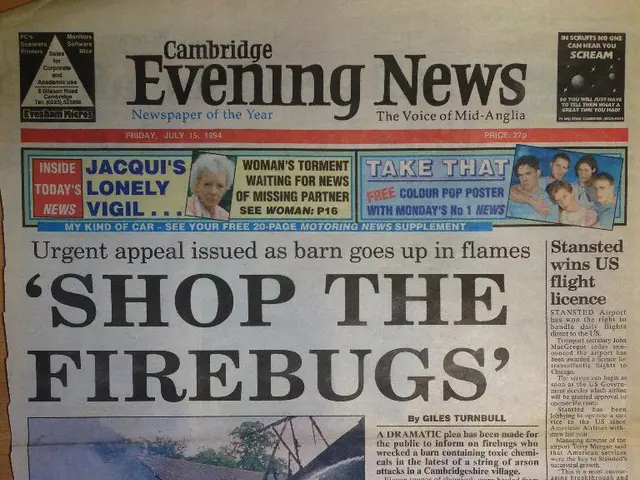Rapid Strategies for Deterring Slugs from New Hostas Growth
Slugs pose a significant threat to young hosta leaves, leaving characteristic holes and slimy trails within gardens. To safeguard your plants and ensure a lush and healthy display, prompt action is essential. Here are effective solutions to deter these destructive pests.
Immediate Analysis
Hostas are especially susceptible to slug damage during their early stages due to their tender leaves. If ignored, slugs can wreak havoc on the plants, causing them to remain bare for the remainder of the season. Prompt defense safeguards plant health and overall garden appearance, and prevents the introduction of diseases which may weaken your hostas over time.
Strategies to Outsmart Slugs
Utilizing Eggshells
Crushed eggshells create an unwelcoming pathway for slugs due to their jagged edges. Scatter the shells around hostas as a protective barrier. Ensure frequent reapplication following rain or watering for optimal results. Not only is this natural solution budget-friendly, but it also benefits soil health by adding essential calcium over time.
Employ Diatomaceous Earth
Harness the power of tiny, sharp diatomaceous earth particles. These particles penetrate and dry out slug bodies, deterring them quickly. Be mindful to avoid inhaling the dust and always wear gloves. Keep in mind that this method loses effectiveness when wet, necessitating frequent reapplication.
Copper Tape Advantage
Slugs are repelled by copper due to its electrical repellent properties. Wrap copper tape around pots, raised beds, or the bases of hostas to create a sturdy defensive line. Ensure the tape remains clean and unbroken for optimal performance. Copper tape is a child and pet-friendly alternative to chemical-based methods.
Beer Traps for Quick Elimination
Slugs are instinctively drawn to the scent of beer, making shallow dish beer traps an efficient way to reduce their population. Bury the rim of the dish so it lies level with the ground and fill with beer. Empty and refresh the traps daily for optimal results.
Handpicking and Dusk Inspections
Armed with a flashlight and container, head out during cool, damp evenings to spot and collect slugs. Concentrate efforts under leaves, around the base of hostas, and in moist areas. Eliminate the captured pests by disposing of them in soapy water. Regular checks every few days help keep the slug population in check.
Water Wisdom
Slugs are attracted to damp environments, so watering your garden in the morning allows time for the ground to dry before the darkness when slugs are most active. This practice minimizes attractants and also prevents mildew or other moisture-related plant diseases. Avoid watering in the evening, which may exacerbate slug populations.
Using Coffee Grounds and Pellets
Sprinkle coffee grounds around hostas to deter slugs with their gritty texture and potentially caffeine-induced nervous system repellent effects. For serious infestations, utilize iron phosphate-based slug pellets which are safe for pets and wildlife.
Mush with Pine Needles
Pine needles create a dry, uncomfortable surface that dissuades slugs. Apply a layer two inches thick around hostas. Besides deterring slugs, pine needles also improve soil structure and add beneficial acidity to the soil that hostas tolerate well.
Encourage Natural Predators
Attract frogs, toads, ground beetles, thrushes, and robin redbreasts to your garden, as they all enjoy feasting on slugs. Provide suitable habitats like logs, rocks, garden debris, and shallow water sources. Avert using pesticides that may harm these beneficial creatures.
Vinegar Protector
Create a 50-50 vinegar and water spray and apply it directly to slugs. Take care to avoid contact with hosta leaves. Vinegar's acidic properties can potentially harm foliage; therefore, this method is advisable only for spot treatments.
Install Copper Mesh Barriers
Flexible copper mesh deters slugs through a mild electric shock. Form it into shapes to fit around garden beds or individual plants. Copper mesh remains effective for multiple seasons and is safe for children and pets.
Plastic Bottle Collars
Cut clear plastic bottles to create collars for young hostas. These collars protect tender shoots, double as physical slug barriers, and allow sunlight and water to reach the plant. Replace as the hostas grow.
Practical Precautions
Begin preventing slug damage prior to their arrival at the start of the season. Keep an eye out for hiding spots like under rocks, boards, or debris where slugs hibernate during the day. Ensure the garden remains clean and disorderly to eliminate potential slug shelters. Balance various methods of deterrents and barriers for the best results.
Regular Upkeep
Slug control requires ongoing attention. Reapply barriers like coffee grounds, eggshells, or diatomaceous earth following heavy rain or watering. Empty and refresh beer traps every few days. Continue monitoring the garden, particularly during the evening, and remain persistent in the application of effective methods.
Place a barrier of crushed eggshells around the hostas to create an uncomfortable pathway for slugs, deterring them naturally and providing essential calcium to the soil over time. Utilize diatomaceous earth, a natural powder with tiny, sharp particles, to dry out slug bodies and repel them quickly, while being careful to avoid inhalation.







